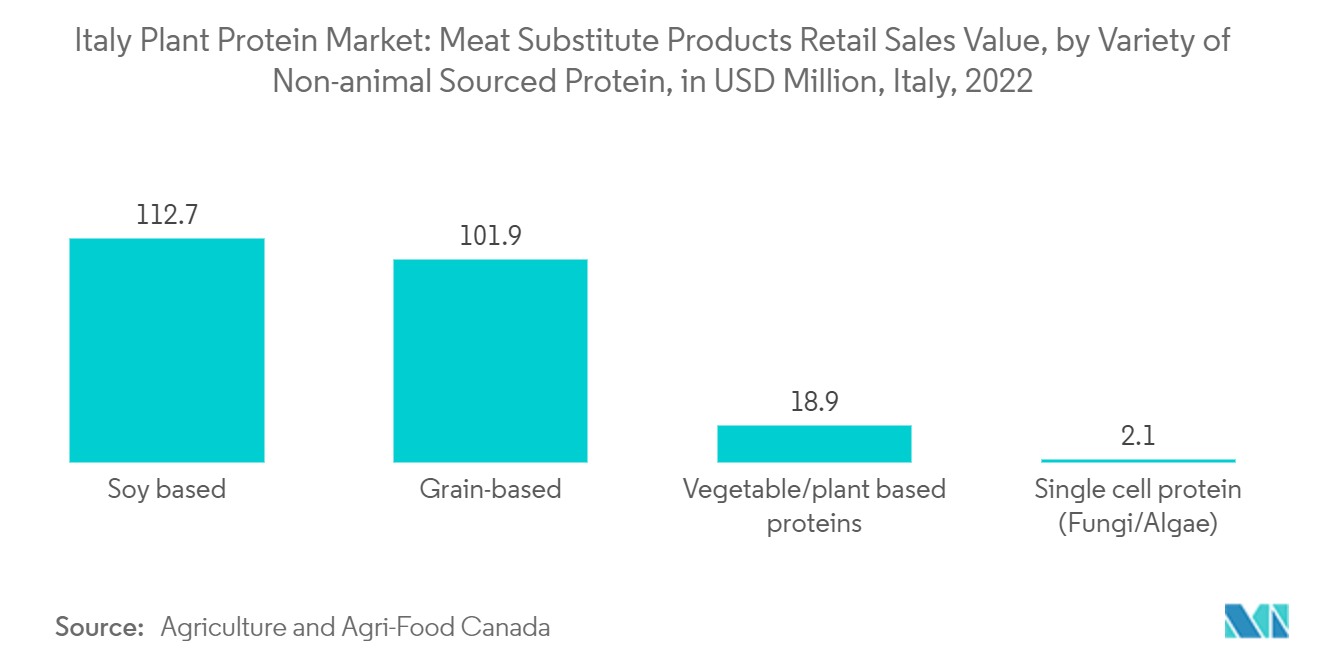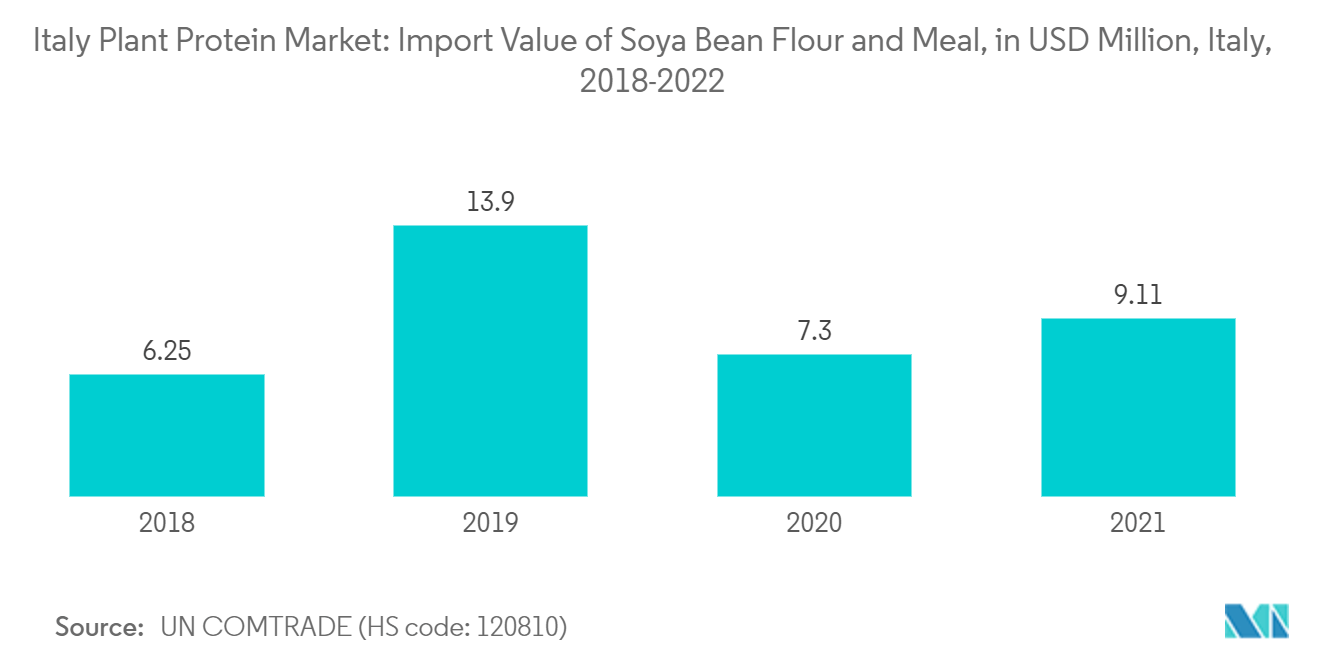Market Trends of Italy Plant Protein Industry
Growing Innovation in Food and Beverage Industry Especially in Vegan Meat Alternatives
- The food and beverage industry is one of the leading application sectors for plant protein in the region. Pea proteins are gaining huge demand from meat alternatives as they provide quick rehydration, neutral taste, and texturizing properties, leading to numerous product launches. For instance, according to the ITC Trade Map Trade statistics for international business development, the import value of peas in 2022 in Italy accounted for USD 75.76 million.
- The rising consumer focus on health and sports fitness is anticipated to drive the segment. The preference for soy in the supplements nutrition sector propels segmental growth. The increasing demand for protein functionalities, awareness about protein-rich diets, etc., primarily drive the demand for the protein market in food and beverage sector.
- The increase is mainly due to product innovations from manufacturers, the adoption rate of consumers toward healthier choices, and the increase in population, thus driving the sales of plant protein in the food and beverages industry. Hence, all the above-mentioned factors positively drive the market in this country.

Animal Feed End-user Segment Dominates the Market
- Soy protein is dominant among all plant protein types due to its high protein content, low viscosity, solubility, etc., which cater to extensive applications in all sectors. The F&B segment leads the market, majorly driven by the meat and dairy alternatives sectors. The wider use of soy proteins in the segment is further promoting growth. Manufacturers' cost-effective options are further encouraging feed companies to incorporate greater protein content in animal feed.
- Moreover, soy protein, mainly in the form of concentrates, is widely used in the diets of animals, birds, and fish. Its main characteristics, such as easy digestibility, improved shelf life, and protein enrichment, are driving its application in the other segments. As a result, Italy imports a significant amount of soy to extract soy protein. For instance, according to UN Comtrade, in 2022, the import value of soy flour in Italy accounted for USD 9.110 million, which is a significant increase from 2021, which accounted for USD 7.301 million.


